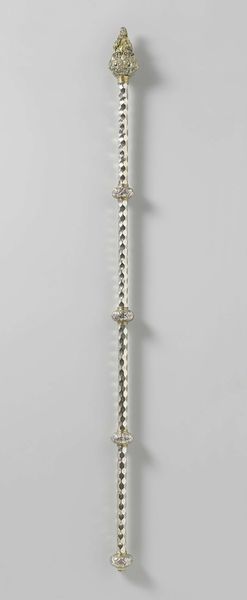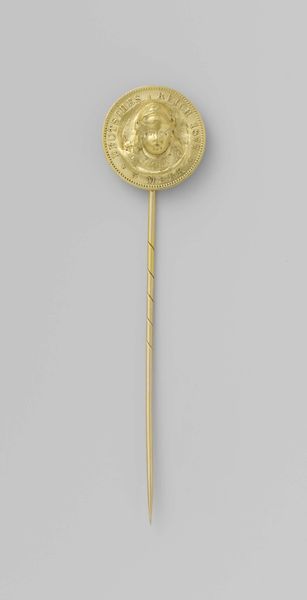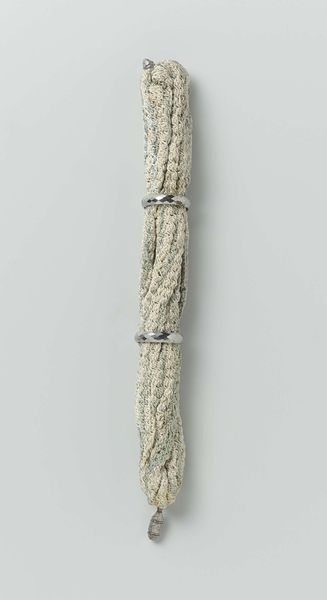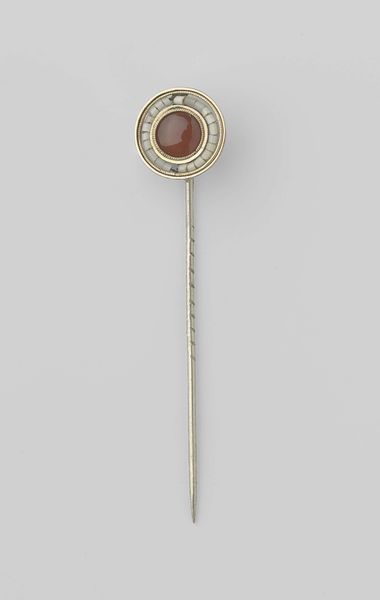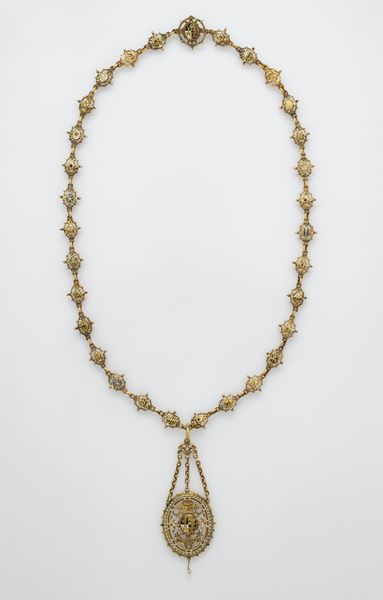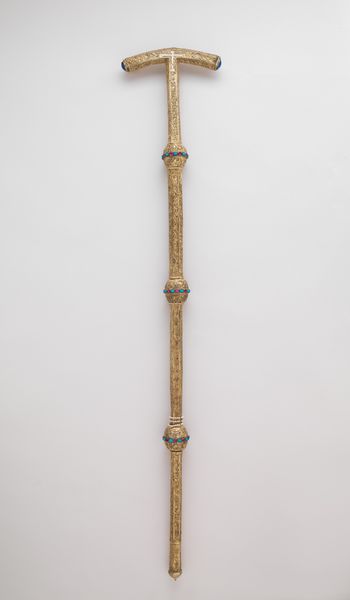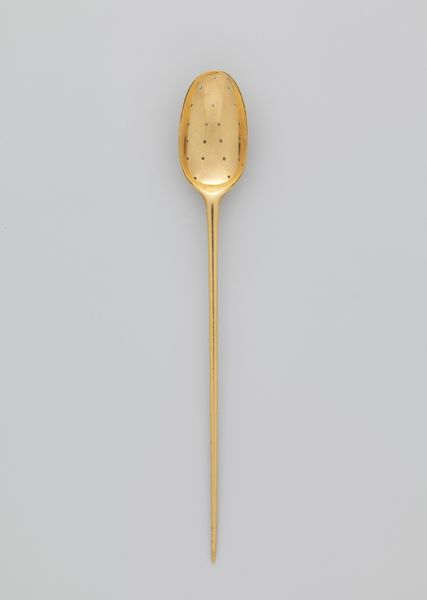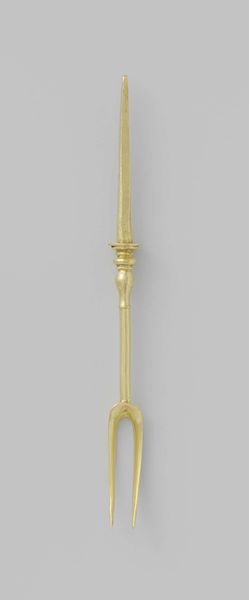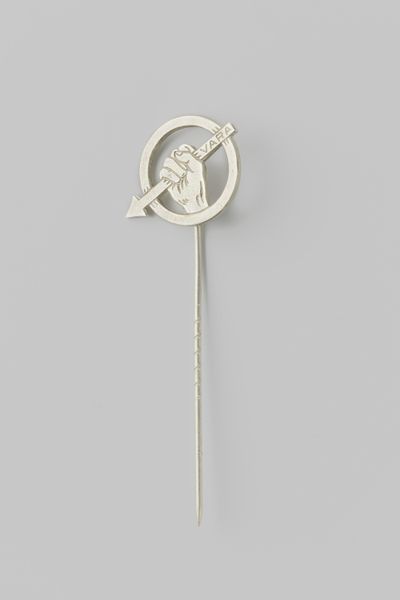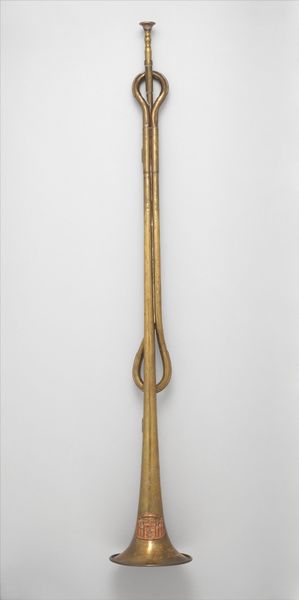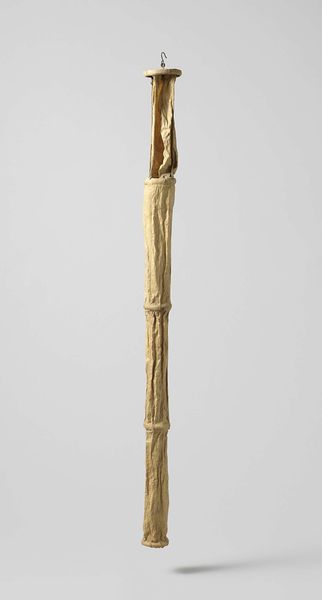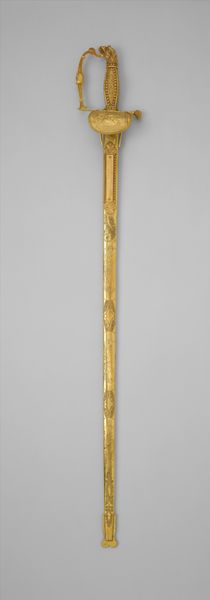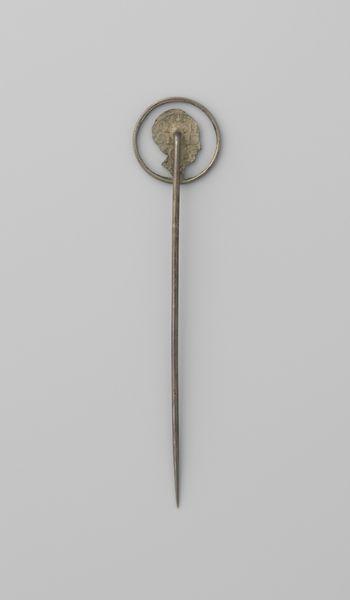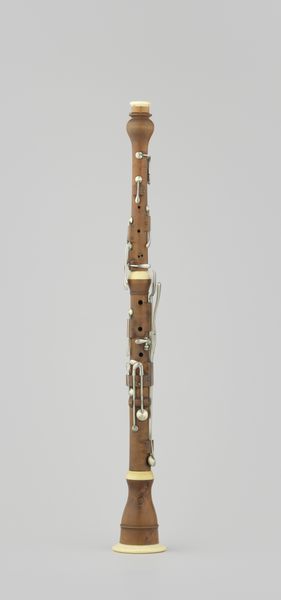
silver, metal
#
portrait
#
silver
#
metal
#
decorative-art
Dimensions: diameter 4.4 cm, length 22.0 cm
Copyright: Rijks Museum: Open Domain
Curator: This is a decorative watch created by Charles Oudin, dating to somewhere between 1820 and 1840. Notice the combination of silver and other metals. Editor: The delicacy of it strikes me first – it almost looks too precious to serve its utilitarian purpose. It presents an image of carefully considered value, not mere practicality. Curator: Exactly. What’s fascinating is the material contradiction; something intended for measuring and governing time so elaborate, almost resisting its function. Who crafted each part? What were their lives like, making this miniature time-telling machine? Editor: The colour palette feels symbolic; the gold tones remind us of prosperity and status. The hints of blue perhaps allude to constancy, the dependability with which the watch would keep time? The wearer of such an object could not just keep the time, but communicate a narrative, to show the world that they control it. Curator: The chain extending upwards looks almost like a plumb line, or maybe a rosary. Given the period, such watches were largely custom made – objects fashioned by workshops that mirrored industrialising factories but with individual flair. Each section of the chain seems distinct and handmade. Editor: And there's a sort of three-pronged element sprouting at the top. Do they offer alternate tools for adjusting the watch face? It's an image of potential: three roads not taken or three paths towards mastery of time itself. It might reference specific tools used, turning mere measurement into ritual. Curator: I see your point. For me, each alteration of the links along the chain communicates a choice. These alterations make us think of time's abstract passage being divided into manageable increments and turned into beautiful design by the creator. Editor: And, ultimately, made wearable, so that temporal awareness might turn from a concept into a way of life. The wearer doesn't just possess a timepiece; they embody the temporal narrative itself. Curator: A final thought—the maker's own "time" becomes part of the object itself. It seems like a constant collaboration across time to produce such a singular piece. Editor: And that act, in turn, leaves us to think about what such symbols meant for those long ago—both maker and owner and ultimately us now—so long after the last tick and tock.
Comments
No comments
Be the first to comment and join the conversation on the ultimate creative platform.
